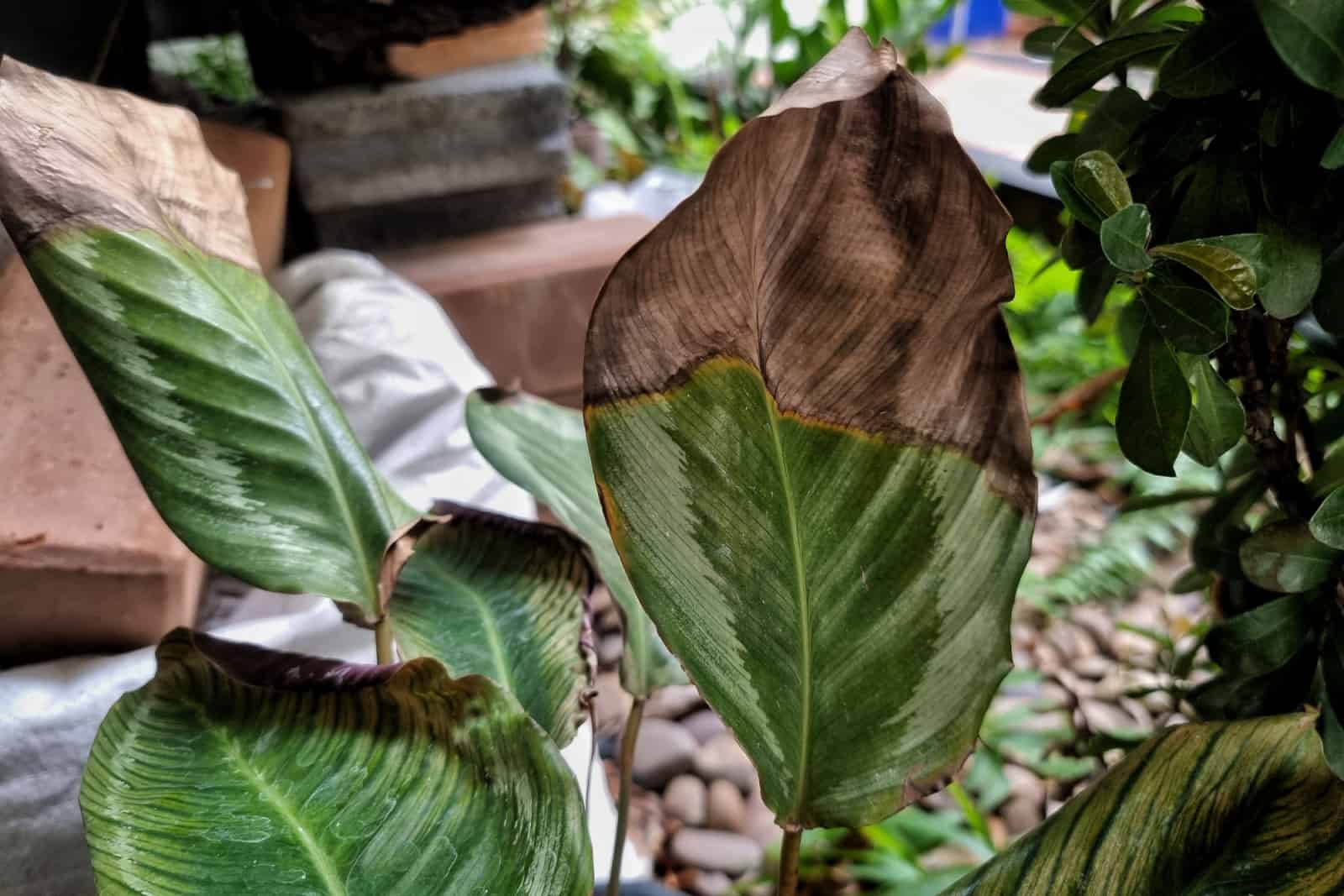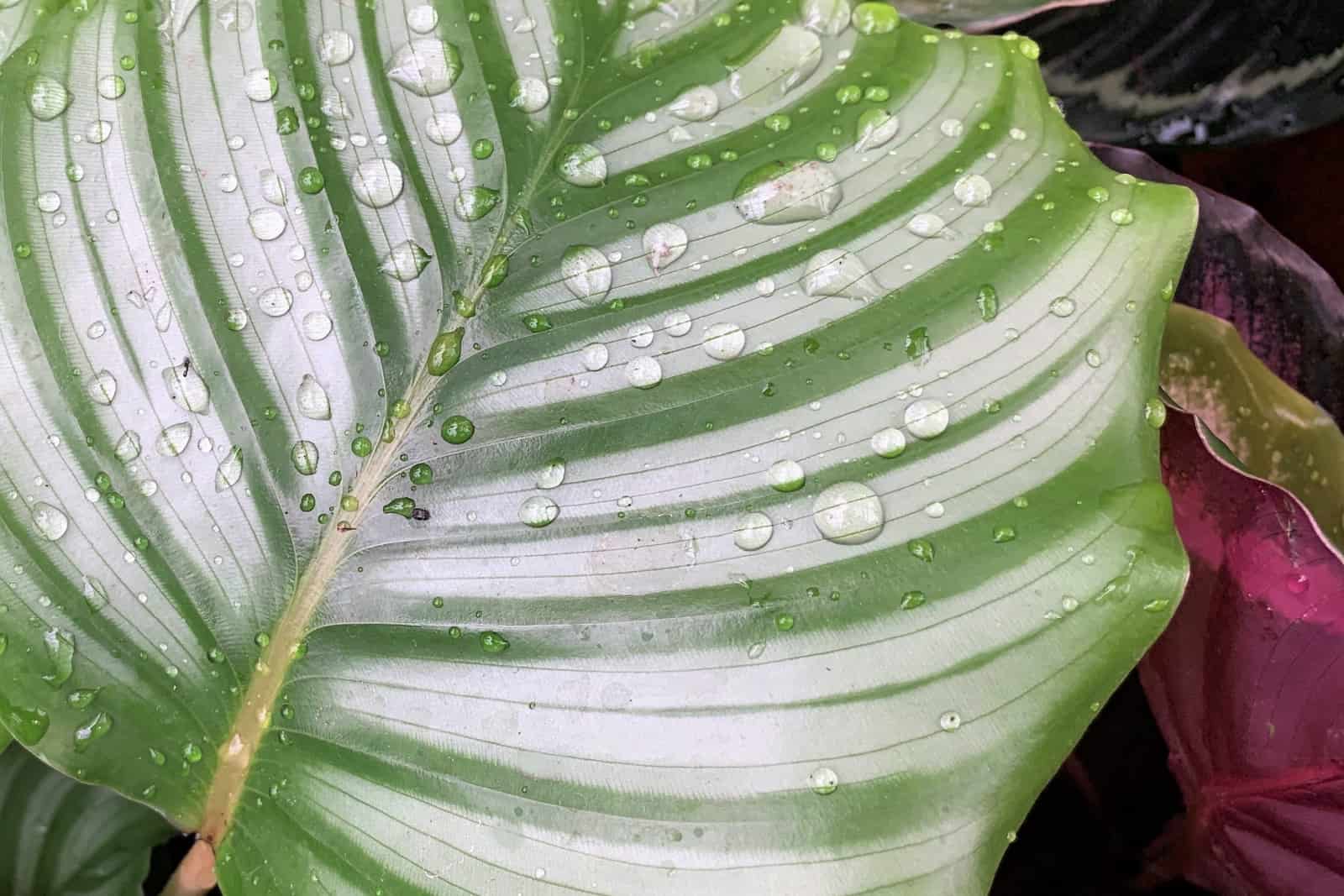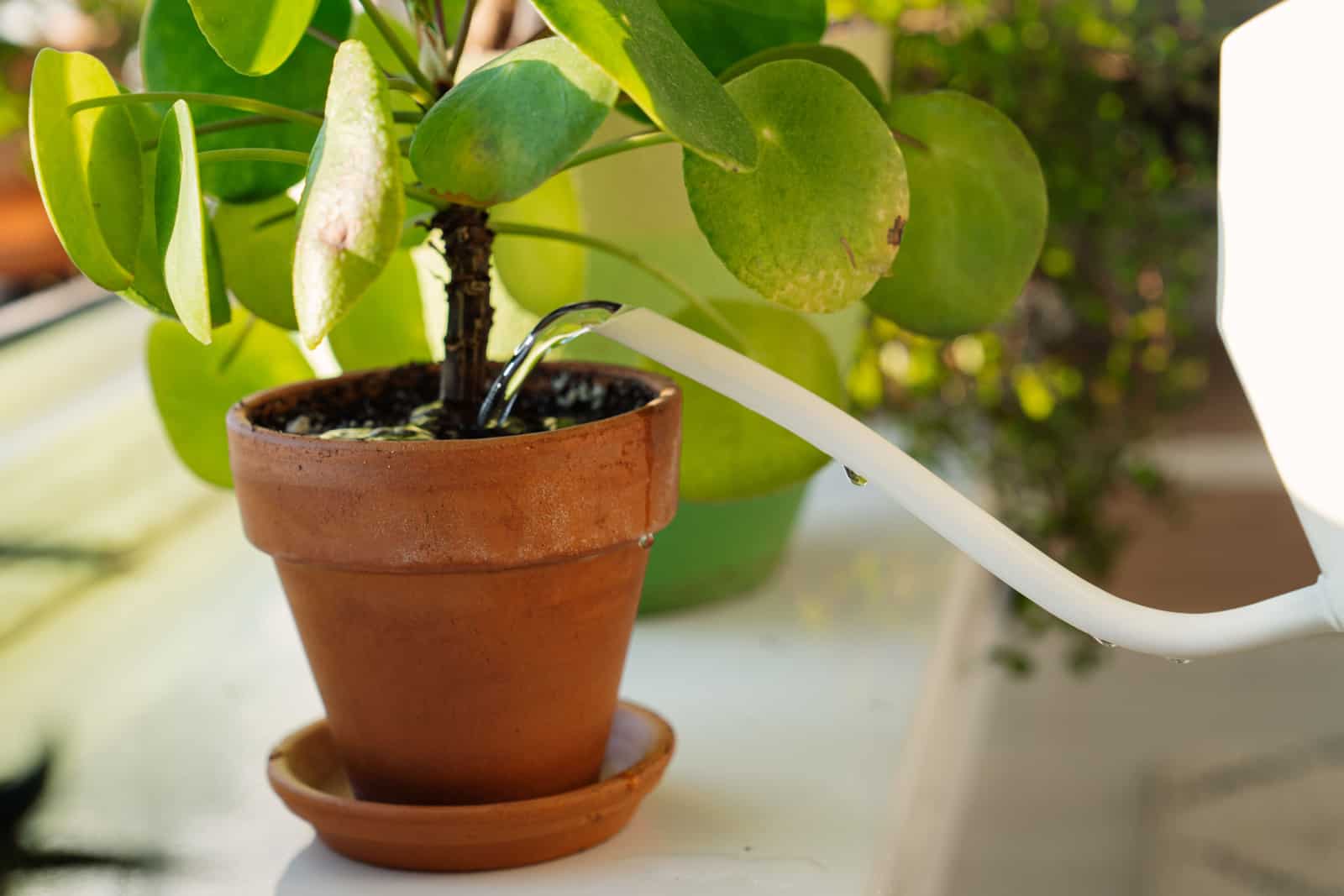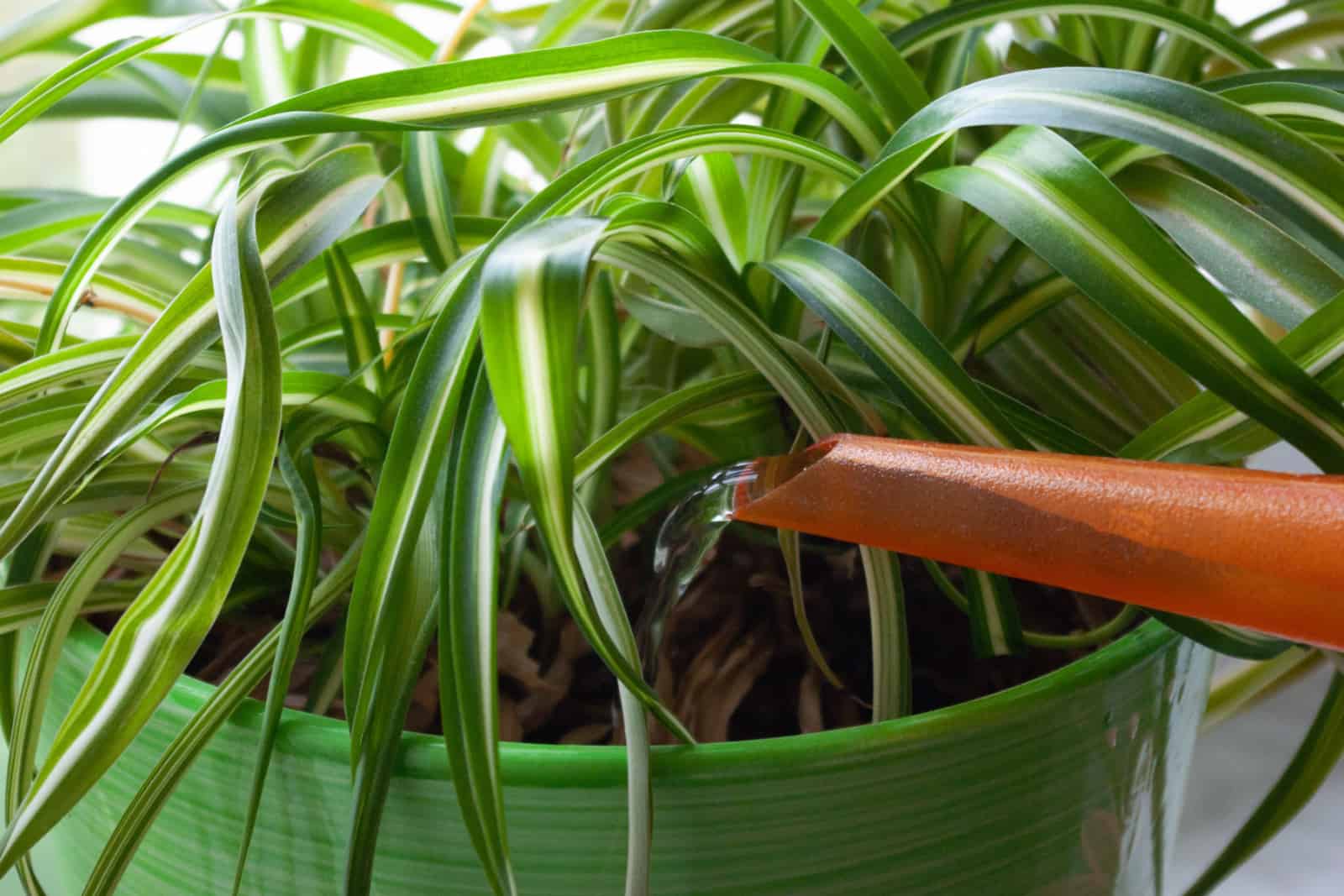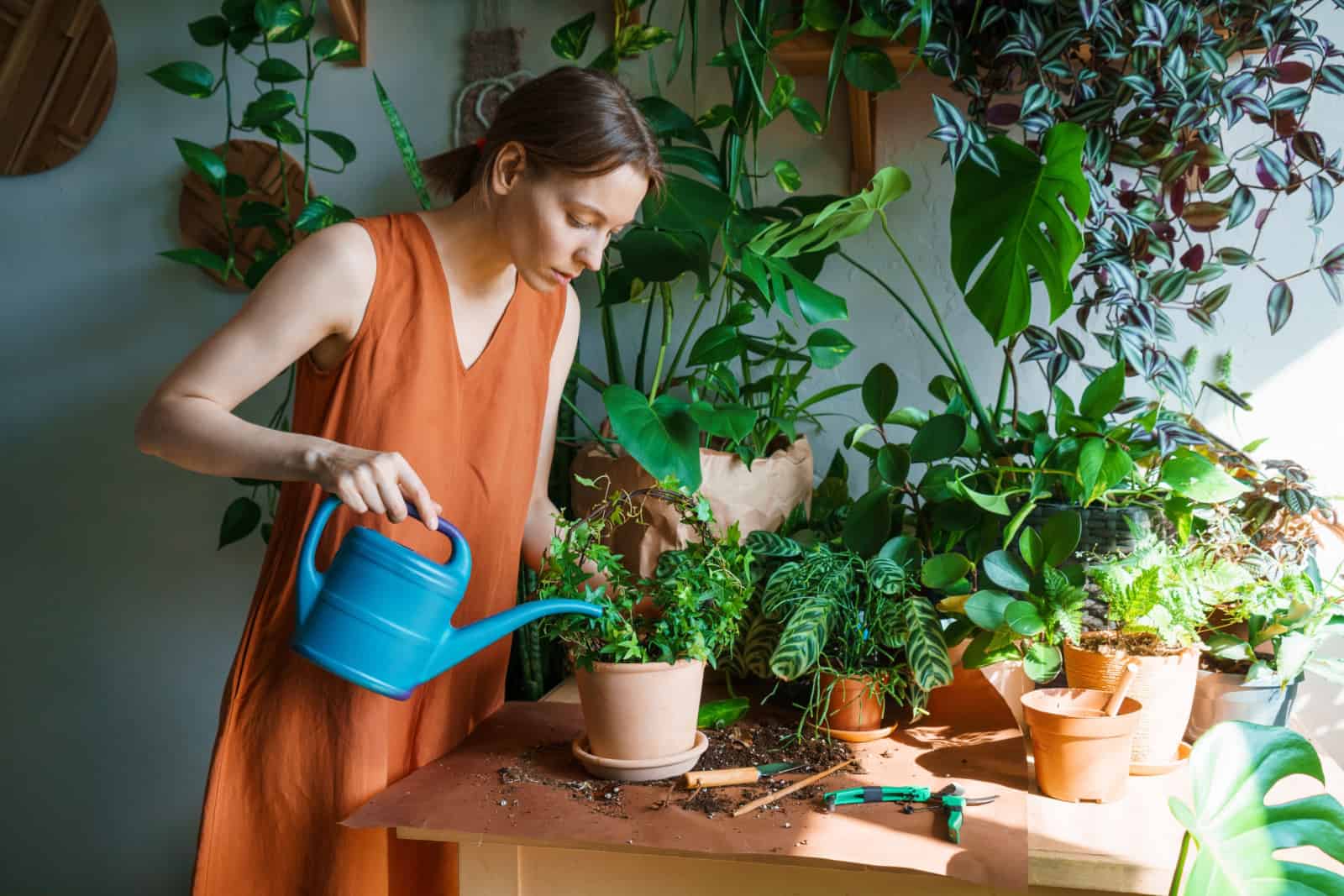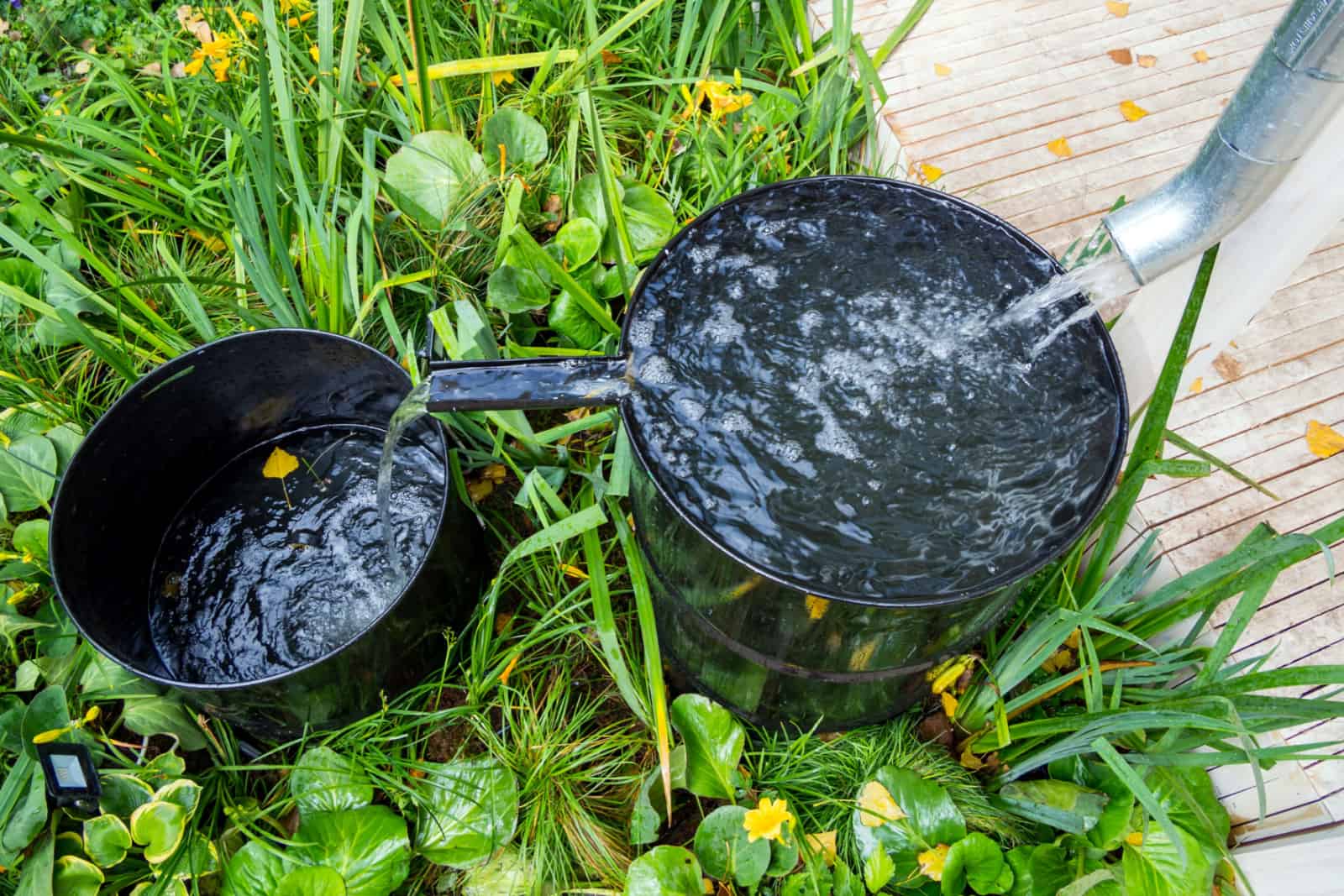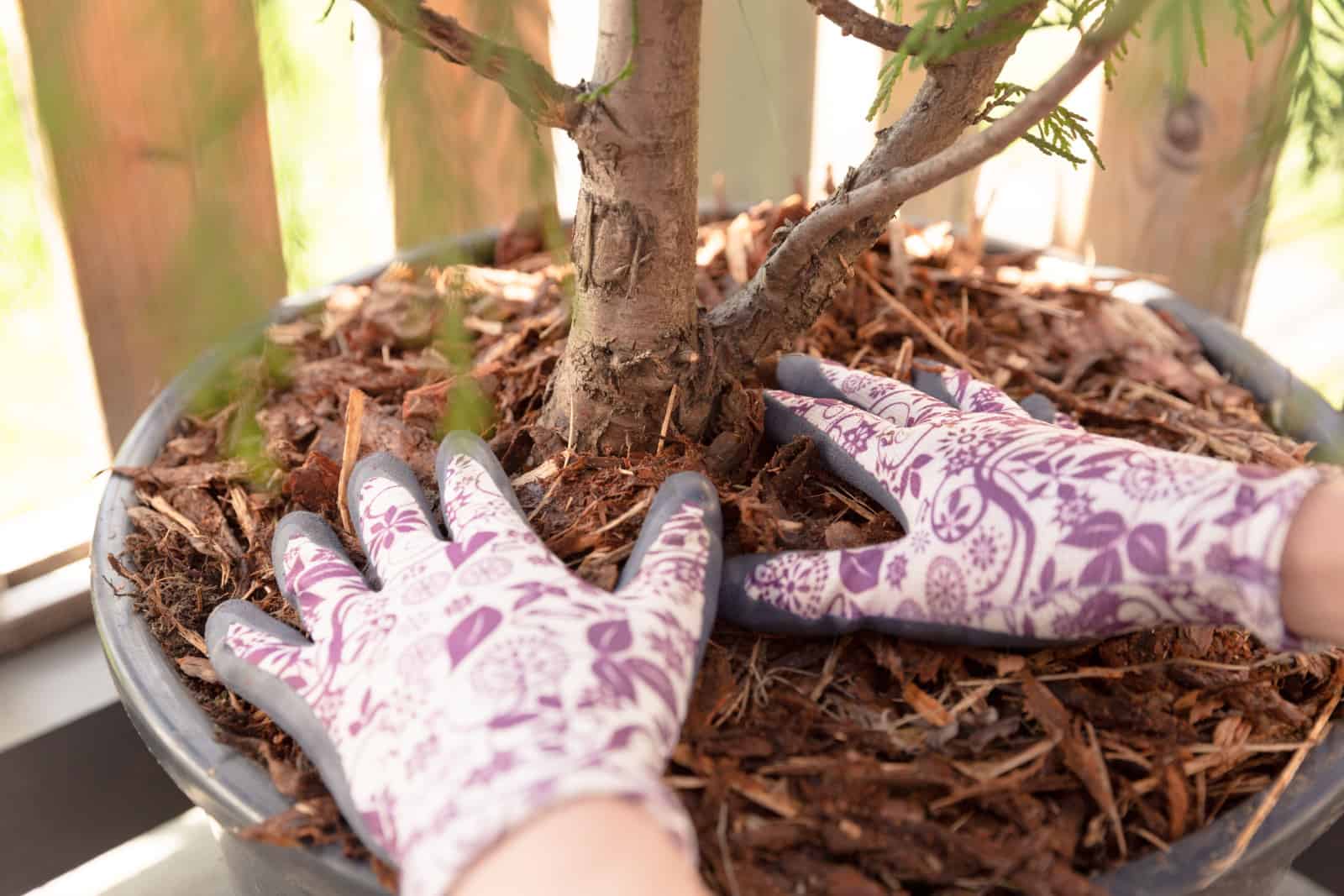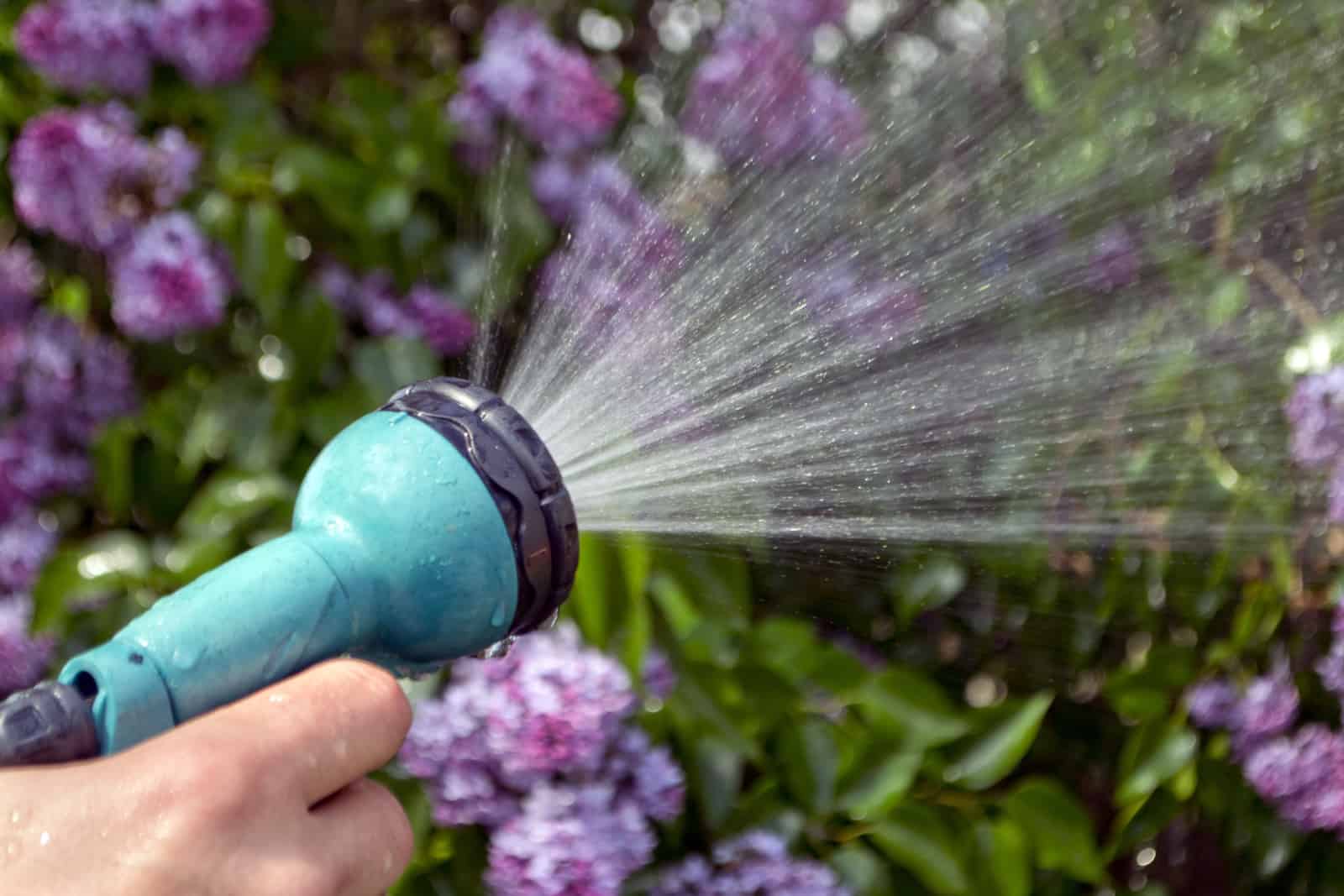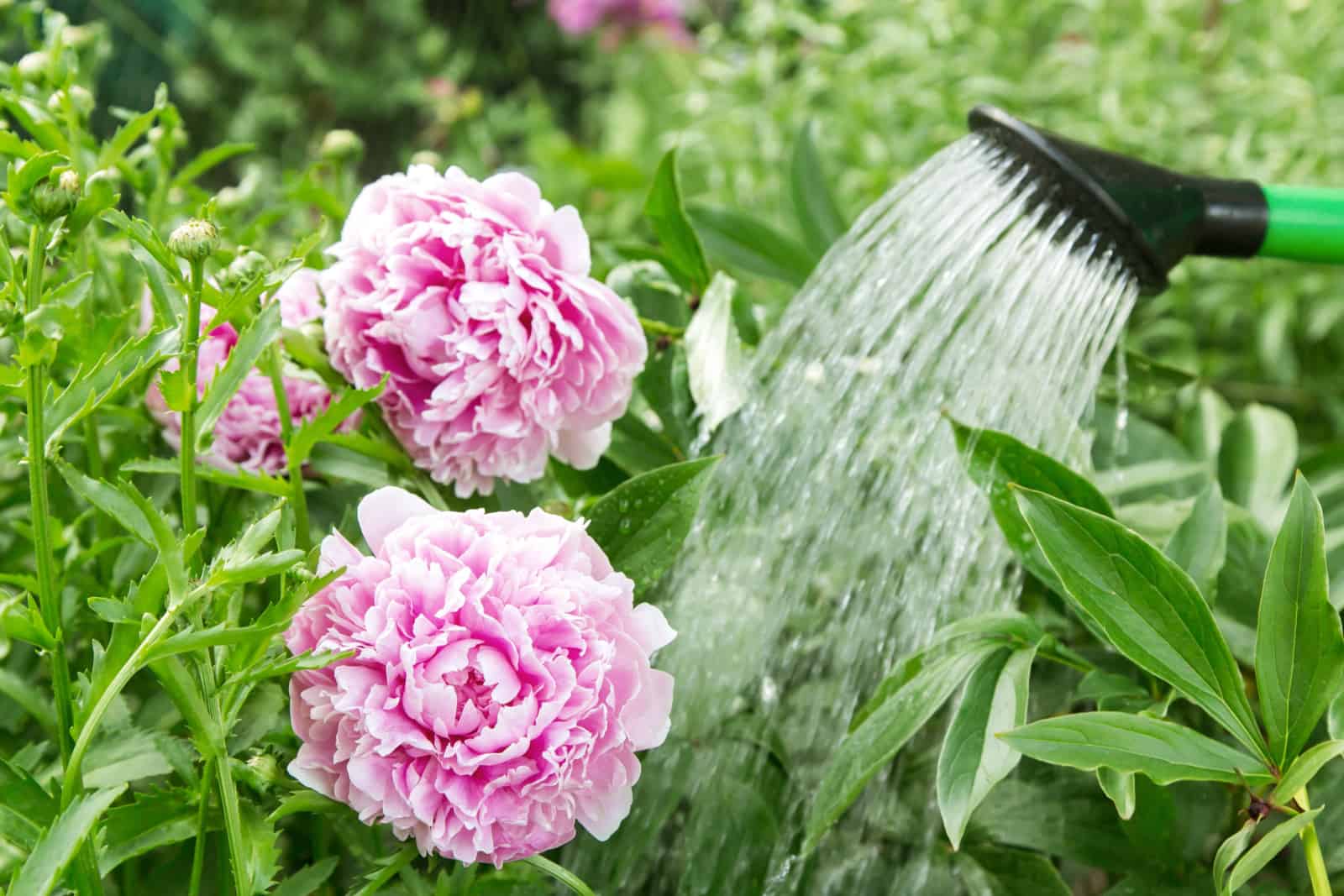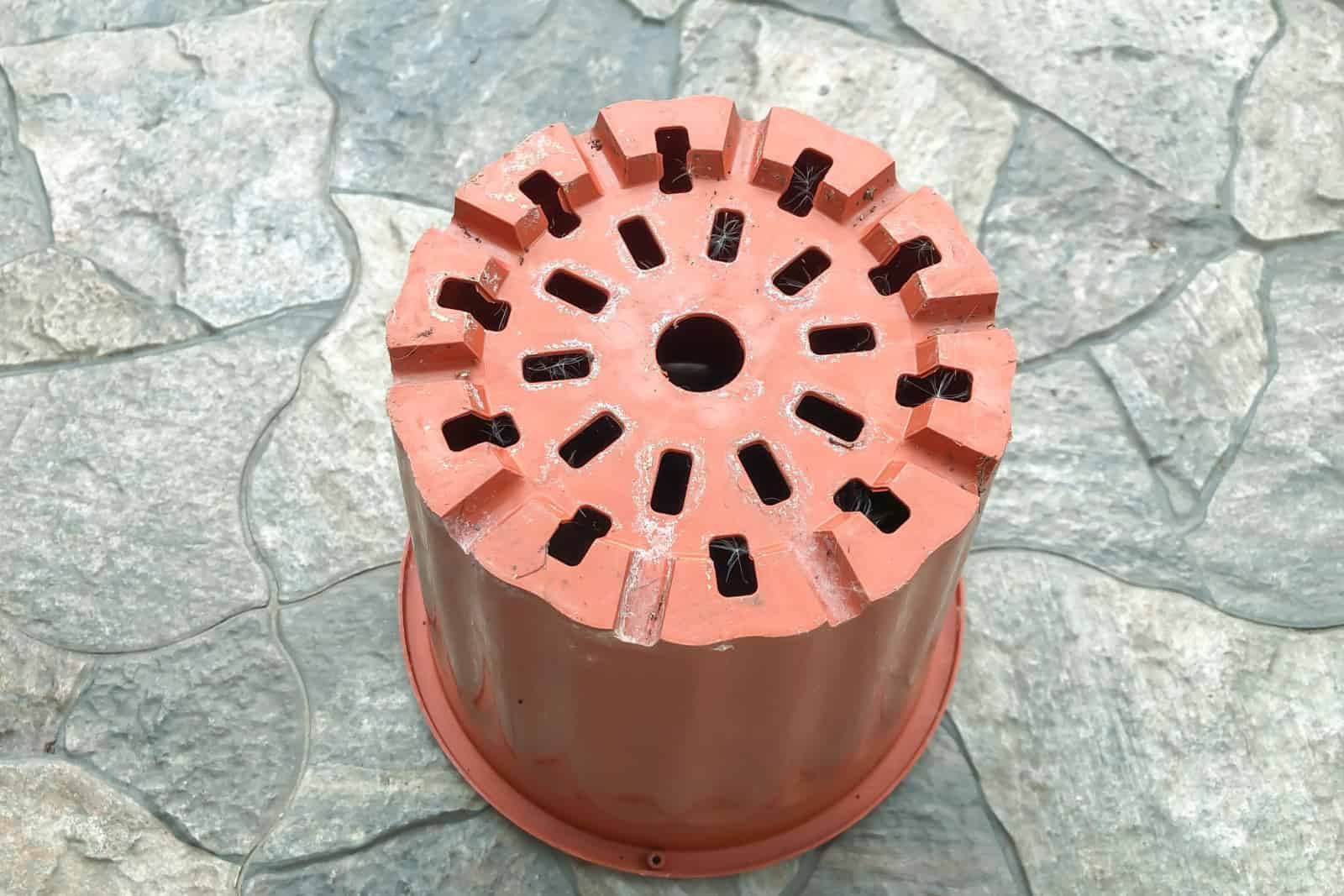Watering is a crucial part of gardening, yet so many of us make the same mistakes over and over again.
Too much moisture can be equally as harmful to your plants as not enough. There are parts of the day when you shouldn’t irrigate your plants and different techniques to bear in mind.
It can also be tricky to tell whether your plants need more moisture or not.
Over the years, I’ve had my fair share of watering chores, so I know something about common garden watering mistakes you should avoid.
Here they are!
1. Under- And Over-Watering Plants
One of the most common watering mistakes beginner gardeners make is over- or under-watering their plants.
The thing about overwatering is that it’s often done with the best intentions. Gardeners want to keep their plants healthy and not dehydrated, but too much moisture quickly leads to a terrible disease – root rot.
Some signs of root rot include weak, slow growth and droopiness, and it also makes plants more susceptible to pest infestations.
Underwatering is equally dangerous as plants need water to function properly just like we do. If you don’t give them enough, they’ll quickly wilt and droop, and their leaves will shrivel and become brown and crispy. Not to mention dropping fruit and flowers!
The good news is that you don’t have to make the same mistake I did. Research your plant and learn its moisture requirements before giving them too much or too little.
Some like their soil to be moist all the time, while others prefer it to dry out between waterings. Very few plants love having their roots in water all day long.
A good rule of thumb, especially for potted plants, is to check the topsoil before watering. If the first couple of inches of the substrate are moist, you should wait until it dries to irrigate your green buddy.
A moisture meter is a good tool to invest in as it can help you understand the water level and decide when to irrigate your plants.
Other things that can influence watering frequency are temperature, soil type, and rainfall. Check your plants every other day and water them once you see them begin to droop.
The good news is that not all plants need water every day, even during the hot summer months, so you probably won’t do any damage if you forget to check on them.
And if you have a container garden, know that potted plants dry out faster than in ground ones, so monitoring and watering them regularly is a must.
2. Wetting The Leaves
Wetting the foliage is something we pay very little attention to, but it can have deadly consequences.
It can lead to the development of fungal diseases because fungi thrive in humid environments. Another thing that can happen are actual burns if you water the plants during the hottest time of the day.
And if that’s not enough, watering plants from above and wetting their leaves can result in loss of water due to evaporation, leaving them dehydrated.
If there’s not enough moisture at the base of the plant, it will cause them to develop shallow roots and make them more susceptible to drought. (1)
Therefore, you should always irrigate your plants at ground level so that the moisture can get where it’s needed – the roots.
If you’re hand watering, aim the can at the base. If you’re using some kind of greenhouse irrigation system, go with drip irrigation or soaker hoses instead of sprinklers to ensure your plants get all the moisture they need.
These setups will get water slowly and directly to the plants’ roots, avoiding over- and under-watering.
3. Watering At The Wrong Time
I always remember my dad warning me not to turn on the sprinklers to water the lawn during the hottest times of the day. I thought to myself that he must be overreacting.
But he was right! The worst time to water plants is during the hotter hours since water will evaporate quickly and leave your plants thirsty, while excess moisture on the foliage can lead to sunburns.
The other time you should avoid watering your plants is at night. Water will accumulate around the roots and increase the risk of infections.
The best times to water your plants are early in the morning, before the midday heat strikes, and early in the evening. The first technique gives your plants ample time to soak in all the moisture and any moisture on the leaves will quickly dry out.
If you water your plants in the evening, they’ll still have enough time to absorb moisture and their roots won’t remain wet, which would happen with nighttime watering. Be sure to avoid splashing the foliage as they might not be able to dry fast enough.
4. Not Irrigating Deeply And Thoroughly
Splashing some water at the base of your plants is not nearly enough to satisfy their moisture requirements. The water needs to get all the way to the roots, so long, deep, and thorough irrigation is very important.
Light watering can cause your plants to develop shallow roots which puts them in danger of drying out too quickly during drought periods. Those with deep root systems will be able to absorb moisture from deeper in the ground. (2)
Lightly watering your plants at the surface level will cause a good deal of moisture to be lost to evaporation, leaving your plants thirsty.
Therefore, you should irrigate your in-ground plants slowly for about half an hour or so. When it comes to potted plants, keep pouring water until you see it coming out through the drainage holes.
This method allows you to irrigate your plants less frequently, which benefits them and reduces your watering chore.
5. Watering All Plants With The Same Frequency
Treating all your plants equally and watering them at the same time can do more harm than good as you’ll end up over- or under-watering some of them.
That’s why researching your plants’ needs is so important. For example, hostas and primroses flourish in moist soils, while lavender, cactuses, and succulents love to be in drier mediums.
Once you get your information, you can group your plants according to their water needs (just don’t forget about soil and light requirements) and water them at the same time.
6. Skipping On Rainwater
Rainwater is excellent for plants! It can lower your water bill tremendously and make your garden more eco-friendly. I know it may not always be possible to collect but give it a try, especially if you live in a rainy region.
It is a natural and sustainable option that benefits plants because it doesn’t contain chlorine and fluorides like tap water does.
Rainwater also has a mildly acidic pH of about 5.6, which makes minerals more available to plants. (3)
Collecting it has never been easier. Use a rain barrel or chain to catch it. You can also go extra by making your own barrel using these tips:
https://www.youtube.com/watch?v=K2qoLtvTYN0
Note: If collecting rainwater isn’t an option and you have to use tap water, make sure to pour it into a large barrel and leave it overnight for the chlorine to evaporate. If you want to get rid of fluorides, you’ll have to get a water filter.
7. Forgetting To Mulch
Mulching involves placing materials on the topsoil. It could be grass clippings, wood chips or bark, shredded leaves, gravel, etc.
It is a crucial step when it comes to watering as it can slow down moisture evaporation from the soil and give the plants enough time to use it.
Mulching will also cool down the soil temperature, reducing the evaporation rate and keeping the plants’ roots nice and cool.
8. Using Too Much Water Pressure
Being rough with plants never brings anything good. Many gardeners make this mistake by not adjusting the water pressure when using a hose to irrigate their plants.
High pressure can damage the stems, branches, and leaves, move soil away from plants’ roots, and even uproot them if it’s really high.
That’s why you should check the pressure before watering and adjust the nozzle if necessary.
If you’re using a watering can, don’t pour all its contents at once. Slowly watering your plants and seedlings will yield much better results as it won’t damage them.
9. Applying A Fixed Water Schedule
I understand that remembering when to irrigate plants with different needs can be too much, especially if you have a lot of them. That’s why watering them every 5-7 days is so popular.
However, you can put your plants in serious danger this way. During hot summers, some plants, such as hibiscuses, need water every day or even more frequently, while lavender can easily go a week without it.
That’s why checking the soil moisture is crucial and can save you a lot of trouble. A moisture meter can be of great help in this case as it’ll ensure you don’t water your buddies too early or too late.
10. Not Paying Attention To Drainage
You can implement all these tips from above and still have your plants wilt and droop. Why? Because the drainage isn’t optimal.
If you have potted plants, use planters with drainage holes in the bottom so that the excess moisture has somewhere to go.
For in-ground ones, planting them on smaller mounds or in raised beds should do the trick.
Of course, getting the soil right is also important, so make sure to use the medium your plants prefer. Sandy soils may leave your veggies underwatered, while heavy clay will waterlog your succulents.
In these cases, mixing some compost, vermiculite, perlite, sand, or bark will improve the texture. Just test the soil first and go from there.
All these tips may make watering hard and tricky to master, but that doesn’t have to be the case. It usually takes a small adjustment to your watering routine to get on the right track.
Those little things can make watering more efficient, less of a hassle, and do a lot for your plants’ health!
References:
1. Watering Trees and Shrubs (2023). University of Maryland Extension.
2. Shoaib, M., Banerjee, B. P., Hayden, M., & Kant, S. (2022). Roots’ Drought Adaptive Traits in Crop Improvement. Plants.
3. Wright, I. & Reynolds, J. (2019). I’ve Always Wondered: Is Rain Better than Tap Water for Plants?. News Centre, Western Sydney University.

